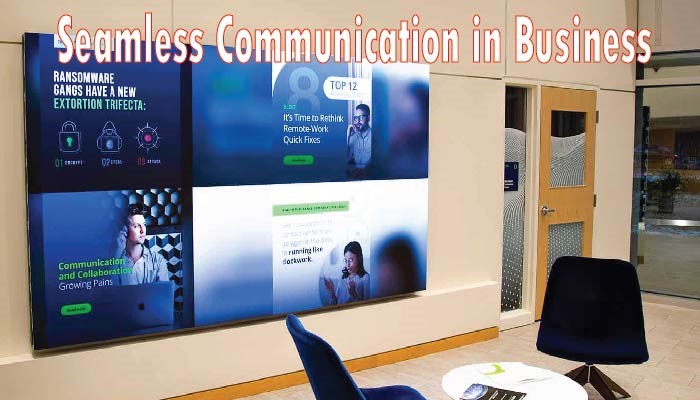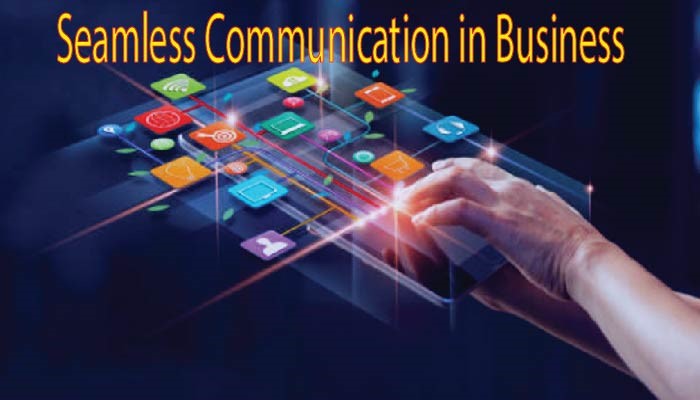Facilitating Seamless Communication in Business: Strategies for Enhanced Collaboration and Success
We are going to discuss Seamless Communication in Business. Communication is the lifeblood of any successful business. It serves as the foundation for collaboration, decision-making, problem-solving, and innovation. In today’s fast-paced and interconnected business environment, the ability to facilitate seamless communication is more critical than ever. This article explores various strategies and best practices for enhancing communication within organizations, fostering collaboration, driving productivity, and ultimately achieving business success.

Understanding the Importance of Seamless Communication
Effective communication is essential for achieving organizational goals, building strong relationships with customers and stakeholders, and maintaining a positive work culture. When communication breaks down, misunderstandings arise, productivity suffers, and conflicts escalate. Seamless communication ensures that information flows freely across all levels of the organization, enabling teams to work cohesively towards common objectives. It promotes transparency, trust, and accountability, leading to higher employee engagement and satisfaction.
Creating a Culture of Openness and Transparency
A culture of openness and transparency is fundamental to facilitating seamless communication within organizations. Leaders must lead by example, encouraging employees to share ideas, express concerns, and provide feedback openly and honestly. Transparent communication builds trust and fosters a sense of belonging, empowering employees to contribute their unique perspectives and insights. By promoting transparency in decision-making processes and sharing relevant information openly, organizations can minimize rumors and speculation, promoting a culture of clarity and alignment.
Creating a culture of openness and transparency within an organization is paramount for fostering trust, collaboration, and innovation. Leaders play a pivotal role in setting the tone by openly communicating with employees, sharing information about the company’s goals, strategies, and challenges. When employees feel informed and included in decision-making processes, they are more engaged, motivated, and committed to the organization’s success. Transparency builds a foundation of trust, empowering employees to voice their opinions, express concerns, and offer valuable feedback without fear of repercussion.
Moreover, a transparent culture promotes accountability, as employees understand the rationale behind decisions and take ownership of their actions and outcomes. By embracing openness and transparency, organizations cultivate a positive work environment where communication flows freely, ideas are welcomed, and everyone feels valued and respected. This fosters a sense of belonging and unity, driving collaboration and collective efforts towards achieving shared goals and objectives.
Utilizing Technology for Effective Communication
Technology plays a vital role in facilitating seamless communication in today’s digital age. From email and instant messaging to video conferencing and collaboration platforms, there is a wide range of tools available to streamline communication and collaboration within organizations. By leveraging technology, teams can communicate in real-time, regardless of geographic location, facilitating faster decision-making and problem-solving. Additionally, technology enables the sharing of documents, files, and project updates, ensuring that everyone is on the same page and has access to the information they need to succeed.
Establishing Clear Communication Channels and Protocols
Clear communication channels and protocols are essential for facilitating seamless communication within organizations. Establishing guidelines for how information is shared, disseminated, and accessed helps prevent misunderstandings and ensures that messages are delivered effectively. This includes defining roles and responsibilities, establishing communication workflows, and setting expectations for response times. By standardizing communication processes, organizations can reduce confusion and streamline information exchange, promoting efficiency and productivity.
Encouraging Active Listening and Empathy
Effective communication extends beyond mere verbal expression; it encompasses active listening and empathy as integral components. Cultivating an environment where employees engage in active listening, endeavor to comprehend diverse viewpoints, and offer thoughtful responses fosters a culture of mutual respect and understanding. Through empathy, individuals forge deeper connections, fostering stronger relationships within the workplace. Moreover, empathy equips employees with the ability to navigate conflicts constructively, facilitating resolution through understanding and collaboration rather than discord.



